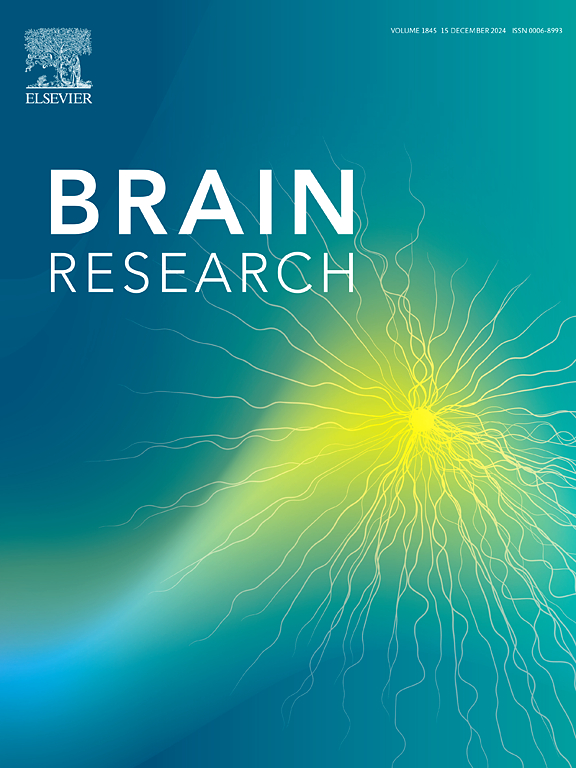Analysis of the effect of combined rehabilitation training and transcutaneous vagus nerve electrical stimulation on promoting central nervous system remodeling in stroke patients
IF 2.7
4区 医学
Q3 NEUROSCIENCES
引用次数: 0
Abstract
Objective
To explore the effect of combined rehabilitation training and transcutaneous vagus nerve electrical stimulation (t-VNS) on promoting central nervous system remodeling and neurological function recovery in stroke patients.
Methods
A total of 124 S patients admitted to our hospital from January to December 2023 were included in this study. The therapeutic effects were evaluated using the Modified Barthel Index (MBI) and the simplified Fugl-Meyer Assessment Scale (sFMA) to measure patients’ activities of daily living and motor function recovery. Additionally, neurophysiological assessments, including electromyography (EMG) and motor evoked potentials (MEPs), were conducted to evaluate changes in neuromuscular and central nervous system function. Changes in neural activity in the frontal lobe and motor cortex were assessed through transcutaneous vagus nerve stimulation and electroencephalography. Moreover, all adverse events were recorded.
Results
After treatment, patients in the t-VNS combined with rehabilitation training group showed significant improvements in sFMA and MBI scores compared to the pure rehabilitation training group (P < 0.05). In terms of neurophysiology, patients in the combined treatment group exhibited significant increases in electromyographic activity and MEPs (P < 0.05). EEG results indicated enhanced neuroplasticity of the frontal lobe and motor cortex with t-VNS treatment. The incidence of skin stimulation and ear pain in the combined treatment group was significantly higher than that in the pure rehabilitation training group.
Conclusion
Combined rehabilitation training and transcutaneous vagus nerve electrical stimulation have significant effects on neurological function recovery and central nervous system remodeling in stroke patients, effectively improving patients’ motor function and activities of daily living.
康复训练联合经皮迷走神经电刺激促进脑卒中患者中枢神经系统重构的效果分析。
目的:探讨康复训练联合经皮迷走神经电刺激(t-VNS)对脑卒中患者中枢神经系统重塑及神经功能恢复的影响。方法:选取2023年1月至12月在我院住院的124例 S患者作为研究对象。采用改良Barthel指数(MBI)和简化Fugl-Meyer评估量表(sFMA)评估患者的日常生活活动和运动功能恢复情况。此外,通过神经生理评估,包括肌电图(EMG)和运动诱发电位(MEPs),来评估神经肌肉和中枢神经系统功能的变化。通过经皮迷走神经刺激和脑电图评估额叶和运动皮层神经活动的变化。并记录所有不良事件。结果:治疗后,t-VNS联合康复训练组患者sFMA和MBI评分较单纯康复训练组有显著改善(P )结论:联合康复训练和经皮迷走神经电刺激对脑卒中患者神经功能恢复和中枢神经系统重塑有显著影响,有效改善患者运动功能和日常生活活动能力。
本文章由计算机程序翻译,如有差异,请以英文原文为准。
求助全文
约1分钟内获得全文
求助全文
来源期刊

Brain Research
医学-神经科学
CiteScore
5.90
自引率
3.40%
发文量
268
审稿时长
47 days
期刊介绍:
An international multidisciplinary journal devoted to fundamental research in the brain sciences.
Brain Research publishes papers reporting interdisciplinary investigations of nervous system structure and function that are of general interest to the international community of neuroscientists. As is evident from the journals name, its scope is broad, ranging from cellular and molecular studies through systems neuroscience, cognition and disease. Invited reviews are also published; suggestions for and inquiries about potential reviews are welcomed.
With the appearance of the final issue of the 2011 subscription, Vol. 67/1-2 (24 June 2011), Brain Research Reviews has ceased publication as a distinct journal separate from Brain Research. Review articles accepted for Brain Research are now published in that journal.
 求助内容:
求助内容: 应助结果提醒方式:
应助结果提醒方式:


